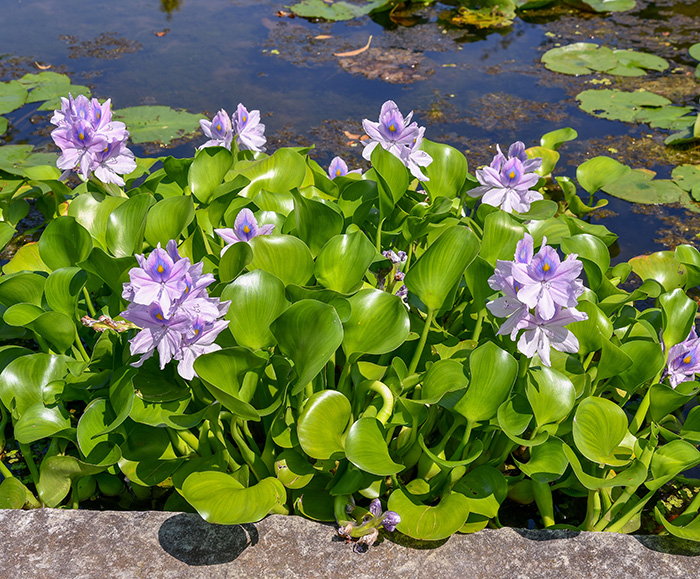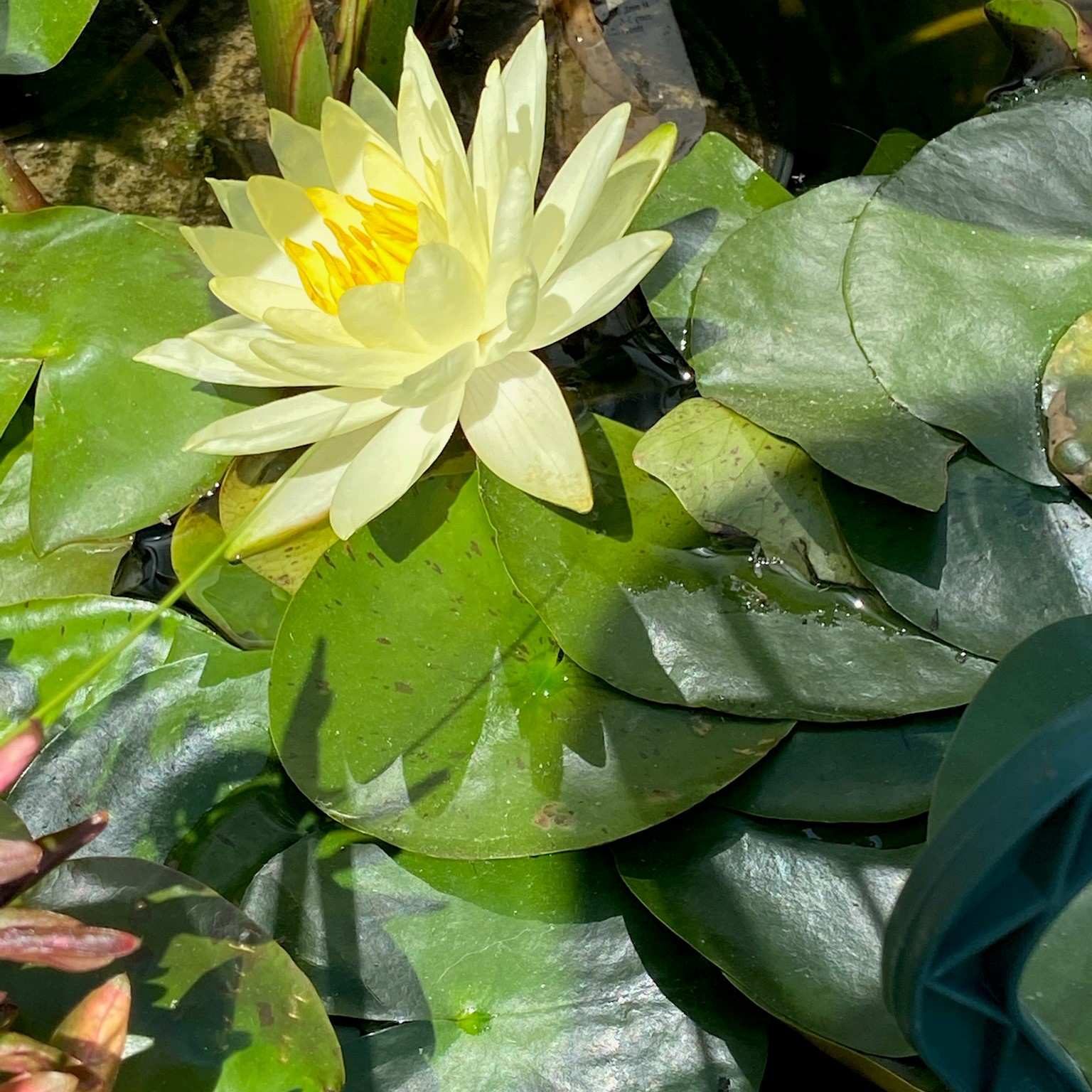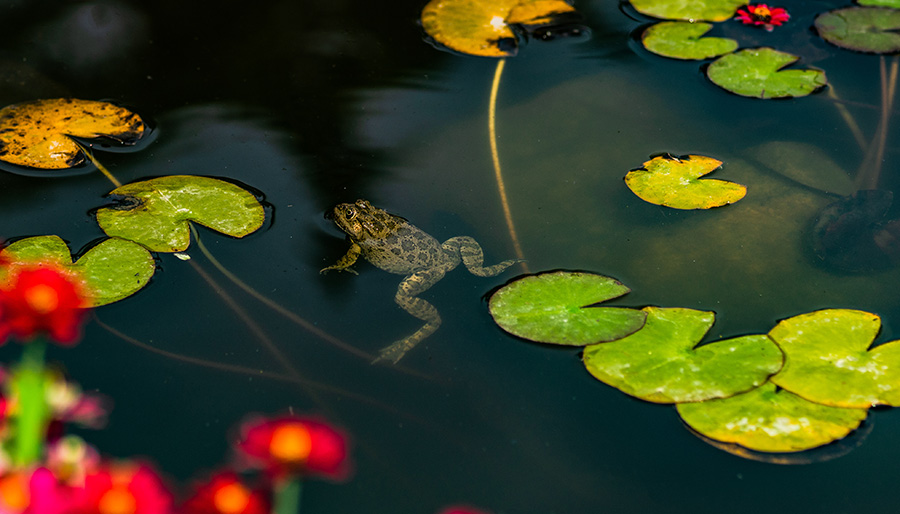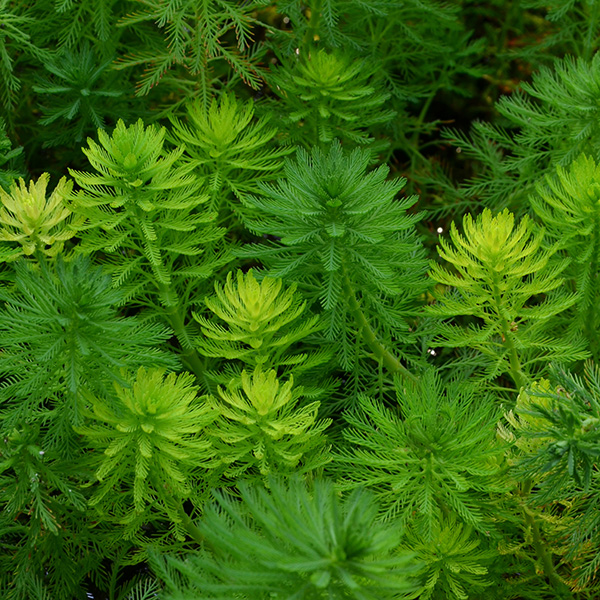Water gardens add a unique flare to the landscape and can become a fun hobby for gardeners. When deciding where to place your pond or water feature, keep in mind that most water plants need at least 6 hours of sun per day. Also consider safety if there are small children in your yard.
There are 4 basic types of plants for water gardeners to use, and since ponds are basically a self-contained ecosystem, they generally require some of each of these types:
- Oxygenators
- Floaters
- Marginals
- Submersibles
Don’t forget that a true ecosystem has animals in it, and fish are the perfect addition to finish off a beautiful pond. They help balance their habitat by eating the algae while also adding nutrients to the water. If adding fish, definitely do not forget to use a chlorine neutralizer before introducing them to the water.
Note that none of our pond plants have been treated with Neonicotinoids.


Oxygenators
Oxygenators usually grow entirely below the water’s surface, though some may “peek out” above as they mature. They provide shade for fish, add natural filtration to the water, and help replace oxygen in the water taken up by fish. Common oxygenators include Hornwort, Red Rotala, Small Pennywort, Redstem Parrot’s Feather (pictured below), and Water Wisteria.
Floaters
Floaters are the most common and easiest pond plants to grow! They provide cover and shade for fish, increase natural filtration, and help control algae growth. They grow rapidly and multiply ten-fold or more throughout the growing season.
If they start to overcrowd the surface of the pond, snap off some of the “babies” and keep them, and give the older plants to a gardening friend. They also make great compost (especially at the end of the season). Common floaters include Water Hyacinth and Water Lettuce.
NEVER put unwanted water plants into natural streams or bodies of water!

Water Hyacinth

Water Lettuce
Submersibles

Lotus (Nelumbo)
One of the most beautiful blooms in nature, Lotus open each morning and close each night. A bloom is short-lived (3-5 days), but is so stunning it’s worth having! Seed pods may be dried and used in arrangements. Flowers are fragrant and attract pollinators to the water garden.
Place pot up to 2’ below the water’s surface and fertilize with 4 tabs in May. Then, fertilize again with 4 more when buds appear, adding 3 tabs every 2 weeks until blooming is finished. If you don’t have a pond, they can be placed in whiskey barrels.
Lotus are winter hardy when placed 2’ below the surface. Let foliage wither and turn brown, cut stems back to 1” above water surface, and then make sure pots are placed below the freeze line of the pond (usually 2’).
Water Lily (Nymphaea)
Missouri native plant with fragrant blooms. Place where surface of pot is within a foot of water’s surface (place at bottom of pond in winter). Use fertilizer tabs every 3 weeks as directed on plant tag. Leaves will reach surface within a few days of placement in water.

Marginals
Marginals are a broad category of plants that live on edges of ponds and streams. They add color, texture, and interest to water gardens. They must be placed on ledges or blocks so that the surface of the pot is within an inch of the water line, either direction, as water levels may fluctuate slightly. For a fun effect, plant marginals in a floating island.

Hardy Marginals
The Kansas City area is located in USDA Zone 6a. Any marginals labeled hardy to Zone 6 should survive the winter with minor winter care. Just remove the growth down to the water surface after the first frost. Most varieties that are listed as hardy to Zones 3 or 4 can be left in place, while those for Zones 5 & 6 might survive better when submerged up to 2’ deep, then returned to their shelves in the spring.
Hardy Marginals
Any tropical plants listed with a minimum hardiness of Zone 7 or higher will need extra care in order to survive winter. Remove plants before the first frost and place them inside in a tub or bucket. Some may need bright light for the winter while others may decide to go semi-dormant. Most gardeners choose to let nature take its course and treat these as annuals, selecting new plants or different varieties each spring. Floaters generally do not overwinter well and it is best to treat them as annuals.

Pond Products
Use care and follow exact instructions when using any garden chemical, especially when adding them to your pond. If you don’t, fish health could suffer. In all cases, it is important to keep the water circulating while the chemicals do their work.
Some gardeners prefer to add the required amount of chemical to a bucket of water, and then pour it into the pond in multiple locations. This helps the chemical diffuse through the water faster.
Pond Soil
Plants purchased in an 8” pot can usually stay in that pot for a season or two. Anything purchased in a 3.5” pot will need repotting. Black plastic grower’s pots work best, as they become virtually invisible when submerged.
Use either a purchased potting medium, or homemade pond potting soil; do not use peat/compost-based potting soil! It is too fluffy and will just float away. Generic kitty litter also works well. If making your own soil, use heavy clay from the yard, or use unenriched topsoil.
For boggy plants that need some sand, add in 1 part sand to 2 parts clay. Make sure pot is soaked and packed before submerging. Top with pea gravel if desired.








